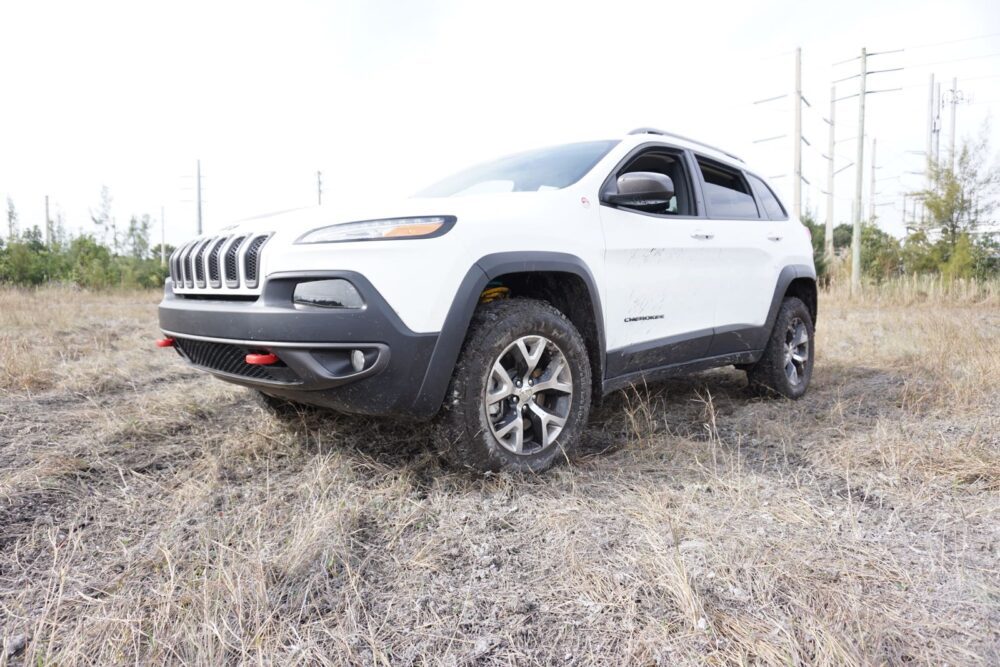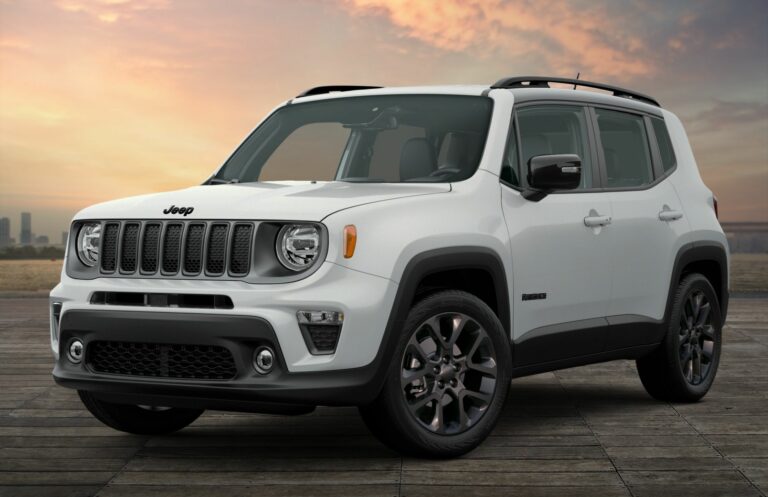Jeep Cherokee Trailhawk Lift Kit: Unleashing Your Off-Road Beast
Jeep Cherokee Trailhawk Lift Kit: Unleashing Your Off-Road Beast jeeps.truckstrend.com
The Jeep Cherokee Trailhawk is renowned for its impressive off-road capabilities right from the factory floor. Equipped with features like Jeep’s Active Drive Lock 4×4 system, Selec-Terrain Traction Management, and increased ground clearance compared to other Cherokee models, it’s a formidable adventurer. However, for those who truly push the boundaries of exploration or simply desire an even more aggressive stance, a Jeep Cherokee Trailhawk Lift Kit is the ultimate upgrade.
This comprehensive guide will delve into everything you need to know about lifting your Trailhawk, from the various types of kits available to the benefits, crucial considerations, and what to expect during the process. Whether you’re aiming for gnarlier trails, larger tires, or just that commanding aesthetic, understanding the nuances of a lift kit is key to transforming your already capable SUV into an unparalleled off-road beast.
Jeep Cherokee Trailhawk Lift Kit: Unleashing Your Off-Road Beast
Understanding the Trailhawk’s Off-Road Prowess (and Why Enhance It)
Before we talk about lifting, let’s appreciate the stock Trailhawk. It boasts a factory lift over standard Cherokees, offering 8.7 inches of ground clearance, enhanced approach, departure, and breakover angles, and underbody skid plates. Its robust suspension, specifically tuned for off-road performance, makes it a highly capable vehicle out of the box.
So, why add a lift kit? While the Trailhawk is excellent, there’s always room for improvement, especially when tackling more extreme terrain or desiring to fit significantly larger tires. A lift kit allows you to clear more challenging obstacles, improve articulation, and gain the necessary fender clearance for bigger, more aggressive off-road rubber, ultimately unlocking an even higher level of performance and confidence on the trails.
Benefits of Installing a Lift Kit on Your Trailhawk
The advantages of adding a lift kit to your Jeep Cherokee Trailhawk extend beyond just aesthetics:
- Increased Ground Clearance: This is arguably the most significant benefit. More space between your vehicle’s undercarriage and the ground means you can navigate over larger rocks, logs, and uneven terrain without scraping, potentially damaging vital components like your differentials, transfer case, or exhaust.
- Accommodation for Larger Tires: A lift kit creates the necessary fender clearance to install larger diameter tires. Larger tires provide a greater contact patch, improved traction, better flotation over soft surfaces like sand or snow, and further increase your effective ground clearance. This is crucial for optimizing off-road grip and performance.
- Improved Approach, Departure, and Breakover Angles: By lifting the vehicle, you effectively increase the angles at which your tires can approach or depart an obstacle without the bumper or hitch dragging. Similarly, the breakover angle, which dictates how easily your vehicle can crest a peak without getting high-centered, is also improved.
- Enhanced Aesthetics and Aggressive Stance: Let’s be honest, a lifted Trailhawk with larger tires just looks more imposing and capable. It gives your vehicle a more aggressive, purposeful stance that reflects its true off-road spirit.
- Better Off-Road Performance: Combining increased clearance, larger tires, and potentially improved suspension articulation, a lift kit fundamentally enhances your Trailhawk’s ability to conquer more challenging obstacles and traverse difficult terrain with greater ease and confidence.

Types of Lift Kits for the Jeep Cherokee Trailhawk

When considering a lift for your Trailhawk, you’ll primarily encounter two main categories of kits:
1. Spacer Lifts (Budget-Friendly)
- How they work: These kits utilize spacers installed above or below your factory coil springs and struts. They essentially "pre-load" your existing suspension components, providing lift without changing the fundamental characteristics of your shocks and springs.
- Pros:

- Cost-Effective: Generally the most affordable lift option.
- Maintains Ride Quality: Since you’re retaining your stock springs and shocks, the on-road ride quality typically remains very similar to factory.
- Simpler Installation: Often easier to install than full suspension replacements.
- Cons:
- Limited Articulation: Does not increase wheel travel or articulation, which can be a drawback on highly uneven terrain.
- No Performance Enhancement: Doesn’t improve damping or shock performance, as it uses existing components.
- Can Exacerbate CV Angles: For larger spacer lifts (e.g., 2.5 inches or more), they can put additional stress on your CV (constant velocity) joints due to increased angles, potentially leading to premature wear.
2. Coil Spring/Strut Replacement Lifts (Performance-Oriented)
- How they work: These kits replace your factory coil springs and/or struts with longer, often firmer, aftermarket components. They are engineered to provide lift while also improving suspension performance.
- Pros:
- Improved Articulation and Travel: Designed to offer more wheel travel, allowing your tires to maintain contact with the ground over highly uneven surfaces.
- Enhanced Damping: Aftermarket struts often provide better damping characteristics, improving both on-road handling and off-road control.
- Designed for Off-Road Use: These components are typically built to withstand the rigors of aggressive off-road driving.
- Cons:
- Higher Cost: Significantly more expensive than spacer lifts.
- Potential Change in Ride Quality: The ride might become firmer due to stiffer springs and/or valving, which some drivers prefer, while others may find it less comfortable.
- More Complex Installation: Requires more involved work, often including spring compressors.
For the KL Cherokee, full suspension systems that involve replacing control arms are less common for mild to moderate lifts (1.5-2.5 inches), as the primary lift is achieved through spacers or strut/spring replacements. However, some kits might include or recommend specific components to address geometry at higher lifts.
Key Considerations Before Lifting Your Trailhawk
Lifting your Trailhawk isn’t just about bolting on new parts. Several critical factors need careful consideration:
- Desired Lift Height: Most Trailhawk owners opt for lifts between 1.5 to 2.5 inches. Going much higher on the KL platform can introduce significant complications with CV axle angles and drivetrain stress without extensive and costly modifications.
- Tire Size Compatibility: Determine the largest tire size you want to run. A 1.5-inch lift might accommodate 245/70R17 or 255/65R17 with minimal trimming, while a 2-inch lift might allow for 265/65R17 or even 255/75R17 (a 31-inch equivalent) with minor trimming and proper wheel offset. Research specific tire sizes and corresponding lift requirements thoroughly.
- Impact on Ride Quality: As discussed, spacer lifts tend to maintain stock ride, while coil/strut replacements can alter it. Be prepared for a potentially firmer ride.
- CV Axle Angles: This is crucial for the KL Cherokee. Lifting increases the angle of your front CV axles. Excessive angles can lead to premature wear, torn boots, and even driveline vibrations, especially under acceleration or when articulating off-road. High-quality kits are designed to minimize this, but it’s a known concern.
- Alignment: A professional wheel alignment is absolutely mandatory after installing a lift kit. The lift changes your vehicle’s suspension geometry, affecting camber, caster, and toe. Proper alignment is essential for safe handling, preventing premature tire wear, and maintaining steering stability.
- Warranty Implications: Installing aftermarket modifications like a lift kit can potentially void parts of your vehicle’s factory warranty, especially those related to the suspension, steering, and drivetrain. Always check with your dealership or review your warranty terms.
- Installation Difficulty: While some basic spacer kits can be a DIY project for experienced mechanics with the right tools, full coil/strut replacement kits are significantly more complex and often best left to professional shops.
- Total Cost: Beyond the kit itself, factor in installation labor (if not DIY), professional alignment, and potentially the cost of new, larger tires.
The Installation Process: What to Expect
Installing a lift kit, especially a comprehensive one, is not a simple task and requires mechanical aptitude, specific tools (like spring compressors for coil kits), and strict adherence to torque specifications.
- Safety First: Always use jack stands, block wheels, and work on a flat, stable surface.
- Disassembly: This involves removing wheels, disconnecting various suspension components (sway bar links, brake lines, ABS sensors), and ultimately removing the factory struts and springs.
- Component Installation: The new spacers, springs, or struts are then installed. This is where spring compressors are often vital for coil kits.
- Reassembly: Reconnecting all components, ensuring proper routing of lines and cables.
- Torque Specs: Tightening all bolts to the manufacturer’s specified torque is critical for safety and performance.
- Post-Installation: A test drive to check for any unusual noises or handling characteristics, followed immediately by a professional wheel alignment. Do not skip the alignment!
Choosing the Right Lift Kit for Your Trailhawk
- Define Your Goals and Budget: Are you looking for a mild aesthetic boost or serious off-road performance? How much are you willing to spend?
- Research Reputable Brands: Look for companies with a proven track record for the KL Cherokee. Popular brands known for quality lift kits for the Trailhawk include Rocky Road Outfitters, Rough Country, Dobinsons, and Teraflex. Always check specific product lines for the KL.
- Read Reviews and Forum Discussions: Leverage the experience of other Trailhawk owners. Online forums and enthusiast groups are invaluable resources for real-world feedback on different kits.
- Consult Professionals: If uncertain, talk to experienced off-road shops or mechanics specializing in Jeeps. They can offer tailored advice based on your needs and local terrain.
Practical Advice and Actionable Insights
- Don’t Go Too High Too Fast: For the KL Cherokee, a modest lift (1.5-2.5 inches) is generally the sweet spot for balancing capability with minimal drivetrain complications. Exceeding this often requires more extensive and costly modifications.
- Measure Before and After: Take precise measurements of your vehicle’s height before and after the lift to verify the actual lift achieved and track any settling over time.
- Invest in Good Tires: A lift kit’s potential is fully realized with appropriate off-road tires. Choose tires that match your intended use (all-terrain vs. mud-terrain) and fit your new lift height.
- Get a Professional Alignment: We can’t stress this enough. It prevents tire wear, ensures safe handling, and is crucial for your vehicle’s longevity.
- Be Aware of Potential Driveline Vibrations or CV Issues: If you notice any unusual vibrations or sounds after a lift, especially from the front end, have it inspected immediately. This could indicate stressed CV joints or driveline angles.
- Consider Complementary Modifications: A lift often goes hand-in-hand with other off-road upgrades like rock sliders for side protection, upgraded skid plates for underbody safeguarding, and potentially upgraded lighting for night trails.
Price Table: Jeep Cherokee Trailhawk Lift Kit Estimates
Please note that prices are approximate and can vary significantly based on brand, retailer, sales, and labor rates in your region. This table serves as a general guide.
| Kit Type | Brand Examples (Generic) | Approx. Lift Height | Kit Only Price Range | Est. Installation Cost | Est. Alignment Cost | Total Est. Cost (Kit+Install+Align) |
|---|---|---|---|---|---|---|
| Spacer Lift | Rough Country, Daystar, Mopar | 1.5" – 2.5" | $200 – $500 | $300 – $600 | $100 – $200 | $600 – $1300 |
| Coil/Strut Replacement | Dobinsons, Rocky Road, Teraflex | 1.5" – 2" | $800 – $1,500 | $600 – $1,000 | $100 – $200 | $1500 – $2700 |
| Full Kit (incl. extras) | Rocky Road (specific kits) | 2" – 2.5" | $1,000 – $2,000+ | $800 – $1,500+ | $100 – $200 | $1900 – $3700+ |
Note: This table does NOT include the cost of new tires, which can range from $800 – $1500+ for a set of four suitable off-road tires.
Frequently Asked Questions (FAQ)
Q: How much lift can I safely add to my Trailhawk?
A: Most experts and experienced owners recommend sticking to 1.5 to 2.5 inches of lift for the KL Cherokee Trailhawk to minimize stress on the CV axles and other drivetrain components. Anything beyond that usually requires significant additional modifications.
Q: Will a lift kit void my warranty?
A: It’s a common concern. While the Magnuson-Moss Warranty Act generally protects consumers, dealerships can deny warranty claims if they can prove the aftermarket part caused the failure. Drivetrain and suspension components are most at risk. It’s best to discuss with your specific dealership.
Q: What’s the biggest tire I can run with a lift?
A: With a 1.5-2 inch lift, you can typically fit 245/70R17 or 265/65R17 (approx. 30.5-30.6 inches) with minor to no trimming. Some aggressive setups with 2-2.5 inches of lift and specific wheel offsets can accommodate 255/75R17 (approx. 31.1 inches) but will almost certainly require fender liner trimming and potentially pinch weld modifications.
Q: Do I need new control arms with a lift?
A: For modest lifts (1.5-2.5 inches) on the KL Cherokee, new control arms are not always strictly necessary, especially with well-designed kits. However, some kits might include or recommend components like upper control arms to help correct caster angles and optimize alignment, particularly at the higher end of the lift range.
Q: How does a lift affect on-road driving?
A: A lift will raise your vehicle’s center of gravity, which can lead to slightly more body roll in turns. Coil/strut replacement kits might result in a firmer ride. Overall, if properly installed and aligned, the on-road driving experience should remain safe and manageable, though it will feel different than stock.
Q: Is DIY installation recommended for a lift kit?
A: For simple spacer lifts, an experienced DIY mechanic with the right tools can often manage it. However, for coil spring/strut replacement kits, the process is more complex and involves dangerous tools like spring compressors. If you’re not highly confident in your mechanical abilities, professional installation is strongly recommended.
Conclusion
A Jeep Cherokee Trailhawk lift kit is a fantastic investment for anyone looking to push their vehicle’s off-road boundaries or simply achieve a more aggressive, capable look. By increasing ground clearance, improving angles, and allowing for larger tires, a lift kit transforms an already competent SUV into an even more formidable machine.
However, it’s crucial to approach this upgrade with careful consideration. Research the types of kits, understand the potential impacts on ride quality and drivetrain components (especially CV angles), and always prioritize professional installation and alignment. With the right planning and execution, your lifted Jeep Cherokee Trailhawk will be ready to conquer new trails and turn heads wherever you go, truly unleashing its full potential.





